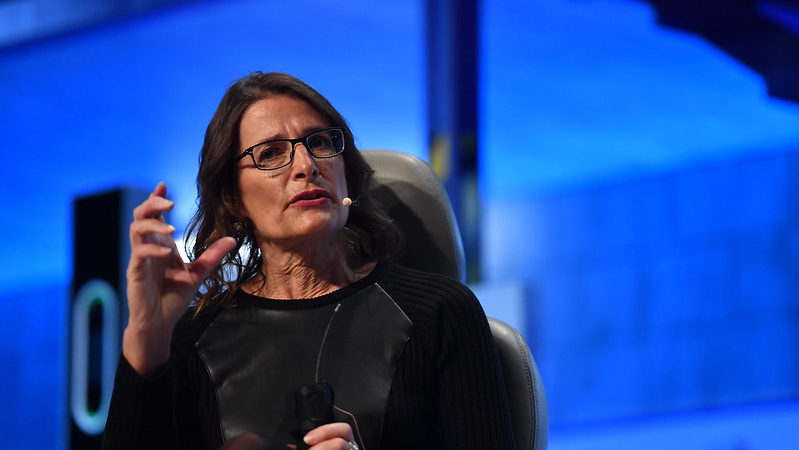How are B2C brands operationalizing privacy into their propositions?
Gam Dias

For any organization holding its customer’s personal data, GDPR and CCPA have upped the ante on Privacy. The big question for marketing and product leaders is ‘How can privacy be profitable?‘
Chasing the goal of profitability through privacy, I curated the Privacy Conference at Web Summit 2019. I attended sessions relevant to privacy seeking answers.
The organizations that compete based on personal data are at the front-line of digital privacy. IKEA and Uber provide very different consumer products. Both have recognized that the value that they deliver to their customers is tightly interwoven with privacy. Their mature approach provides any organization with a good framework for solving the challenges of privacy with profitability.
IKEA: Daring to go beyond customer centricity
Barbara Martin Coppola, IKEA’s Chief Digital Officer shared IKEA’s plans for Furniture-as-a-Service vision for communities that produce and share energy and the prototype of Robotic Furniture, “… these three applications that I showed you are all based on data. And since it’s based on data on our most private environment which is the home. We need to treat it with utmost respect. We need to start designing for transparency for all people. Continue feeling safe at home, and actually getting the benefit of all the new applications for themselves and the community in a very, very open way.”
IKEA is building transparency deep into their products which is a vital part of a Smart Home. How will governance and control of the data be incorporated into their model?
Uber: Privacy meets innovation in a global marketplace
Ruby Zefo, is Uber’s Chief Privacy Officer, reporting into the Chief Legal Office, a milestone in itself. Her philosophy is on building the trust of consumers and then operationalizing that in the organization. “If you really want people to trust you, you have to admit that you’re going to do things differently. [..] And then you have to figure out the cultural shift [..] we came up with internal privacy principles and they are based on our cultural norms. [..] So how do you operationalize those you’ve got to bring those down to a way that people can actually live and breathe them and bring those to life. So one of the ways we did that was by really amping up our privacy by design process so anything that’s going to process anybody’s data goes through privacy Impact Assessment. And if you’re here in Europe and we have any high risk data then it’s got to go through a data protection impact Assessment.“
Addressing the issue of private hampering innovation, “I don’t believe people are very innovative if they can’t design with privacy in mind, and our business crosses from the digital into the physical world and so safety is equally important. And those two things cross, for example, you can text or chat or call your driver in your app. But he’s not going to see your phone number so that’s a safety feature and a convenience for you. But we also did it in a way that had a privacy protection and you wouldn’t want to go around with all of your products not designed for safety in mind. Nobody says, Oh, I’m not going to put a seatbelt in here and I’m not gonna have a roll bar, I’m not going to have airbags, because it’s just safety. So I feel the same passion about privacy. These things can should be designed into products from soup to nuts cradle to grave“
On the topic of local governments protecting information, “as a privacy advocate I care very much about what happens to the data when it leaves the hands of corporations. And one of the things I like about GDPR is that it governs the public sector as well as the private sector. [..] we understand that cities need data for their city planning that’s completely acceptable and we would love to help them, but there again in the privacy by design, and principles and a good data steward way. There are ways to do that, where you can have the data you need and you can also take account of people’s privacy rights…”
Uber is an organization moving fast and under tremendous commercial pressures. It gives privacy same treatment as safety institutionalizing it as a no-compromise organizational value.
Back to Web Summit 2019 – The Privacy Track
Next Steps For Marketers
As a marketer, your job is to create and nurture product markets. Data has been incredibly effective in enabling this, yet without regulation has created paths to exploitation and bad actors. New regulations put a throttle on current customer acquisition practices and engagement models. Yet there is an opportunity right now to turn this constraint into competitive advantage. Here are 6 steps to move to a privacy-for-profit model.
First build trust
- Implement Governance: establish an actual operation model for governance that goes beyond compliance.
- Offer Transparency: ensure that your current customers gain transparency into how their data is used and the benefit they receive.
- Enable Control: give them some means of control, there are many third party solutions that could be leveraged.
Then find profit
- Determine Value Proposition: what are new propositions that can be created out of consent. What are the data products, what is the consumer offer?
- Create the Value Chain: what is the data value chain required to deliver a profitable business. How do we create a data mobility infrastructure and work with partners to create new value?
- Make it Scale: how can the profitability grow as that proposition scales? What are the business models and data value projections that will justify investment?
3 Points Digital’s Personal Data and Privacy practice will help you find the profit model in your privacy preparations. We provide interim Chief Data Officers and frameworks for Governance, Transparency and Control.
Web Summit Videos
Daring to go beyond customer centricity. Barbara Martin Coppola, IKEA
Privacy meets innovation in a global marketplace, Ruby Zefo, Uber
Don’t Offer Privacy, Build Relationships Instead
Gam Dias
Last week’s WhatsApp-Facebook data sharing announcement prompted a flurry of contacts to join me on the secure messaging platform, Signal. Mainstream documentaries, movies and books are waking c...
10 Reasons You Don’t Need a Data Strategy
Gam Dias
Organizations are recruiting and appointing Chief Data Officers to develop new data driven cultures and business-driven analytics programs, but sometimes having that person can be vastly overrated, no...

